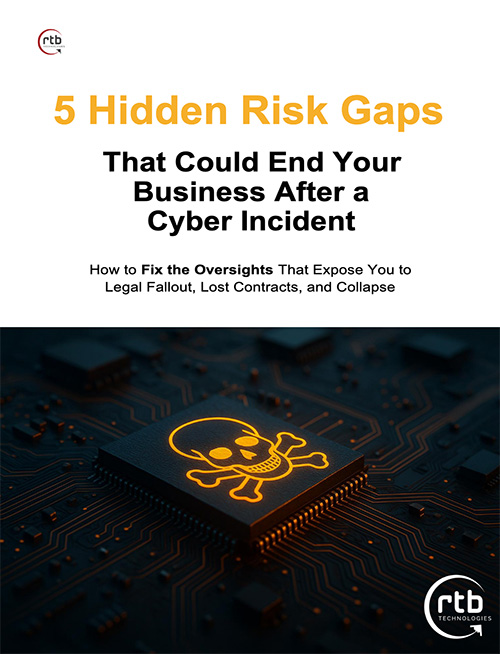When Cyber Risk Is a Boardroom Problem, You Need Boardroom-Level Leadership
RTB’s Fractional Chief Security Officer (fCSO) service gives you the strategic oversight, risk accountability, and executive insight to lead through cyber risk.
Cybersecurity is no longer just an IT issue. It’s a business risk issue—with legal, financial, and reputational consequences. And when a breach happens, someone is held accountable.
The problem? Most small and mid-market companies don’t have a CSO or board-level cybersecurity leader.
That’s where RTB’s fCSO service comes in. We provide seasoned, military-trained cybersecurity executives to:
- Align your cybersecurity strategy with business risk
- Translate technical threats into board-level business outcomes
- Hold your internal and outsourced teams accountable
- Meet regulatory and cyber insurance requirements with clarity and confidence
You don’t need to hire a full-time security executive. You need an experienced fCSO who can lead through risk, not just react to it.
What You Get With RTB:
- Strategic cybersecurity roadmap linked to liability and resilience
- Third-party risk assessments and insurance-aligned security benchmarks
- Board and executive reporting that enables confident decision-making
- Security architecture and policy oversight
- Cyber insurance and regulatory alignment
- Military-grade insight from veterans of the NSA and U.S. Air Force
Who It’s For:
The fCSO service is ideal for organizations that:
- Have regulatory or contractual cybersecurity requirements
- Need executive-level visibility into their cyber risk exposure
- Work with an MSP but lack internal security strategy
- Want to stop chasing compliance and start leading with confidence
- Are preparing for investment, M&A, or public sector contracts
If your business would be financially or reputationally impacted by a breach, you need security leadership that operates at the executive level.
FAQ: What's the Difference Between a CIO, CISO, CTO, and CSO?
CIO (Chief Information Officer): The CIO oversees the organization’s entire information technology infrastructure. Their primary focus is on ensuring that IT systems support the company's strategic goals. CIOs are responsible for technology enablement—keeping systems operational, secure, and aligned with business objectives.
CISO (Chief Information Security Officer): The CISO is responsible for the organization’s cybersecurity posture. They manage internal cybersecurity operations, develop and enforce security policies, and oversee risk mitigation strategies. CISOs often operate within the IT department and tend to be more tactical than strategic in their focus.
CTO (Chief Technology Officer): The CTO leads technological innovation and development. Their role is to drive the organization’s technology vision, evaluate emerging technologies, and ensure that infrastructure and platforms support long-term strategic growth. CTOs typically focus on R&D, product development, and maintaining competitive technical advantage.
CSO (Chief Security Officer): The CSO leads broader security strategy. They connect cybersecurity threats to broader business risks, ensure executive accountability, and align controls with regulatory and contractual demands. The CSO is a business-facing role that bridges departments and guides overall risk posture.
RTB’s fCSO delivers CSO-level leadership without the cost of a full-time executive—providing cross-functional oversight, risk guidance, and evidence-backed governance that aligns cybersecurity with real-world business exposure.
Book Your Cyber Risk Discovery Session
Every engagement starts with a strategic diagnostic to understand your business liability, regulatory posture, and cybersecurity maturity.
Schedule Now or call 720-828-8490



